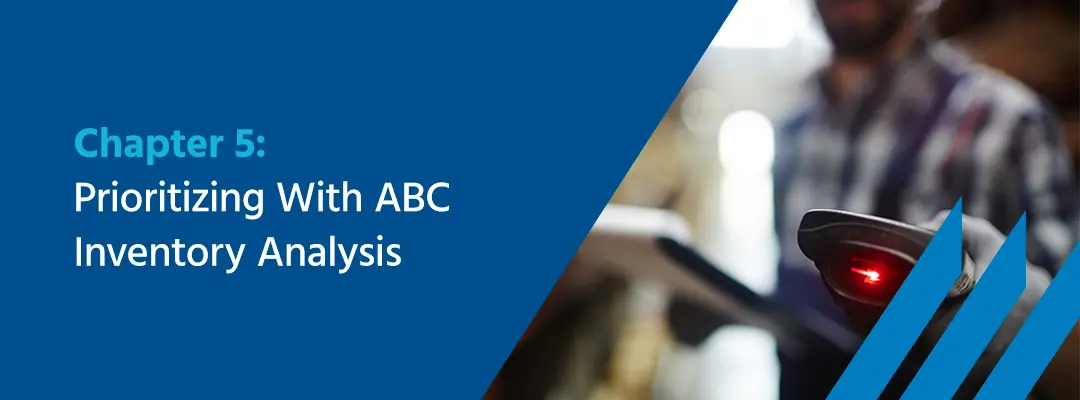Chapter 5: Prioritizing With ABC Inventory Analysis
 One of the best modern inventory management techniques is using ABC analysis to classify and prioritize your inventory. By focusing your attention on your most important stock first, your business can plan for success. You can use ABC analysis to determine how you allocate inventory staff and resources, organize your warehouse and order inventory.
One of the best modern inventory management techniques is using ABC analysis to classify and prioritize your inventory. By focusing your attention on your most important stock first, your business can plan for success. You can use ABC analysis to determine how you allocate inventory staff and resources, organize your warehouse and order inventory.
What Is ABC Analysis and the 80/20 Inventory Rule?
The Pareto Principle is the theory that 80% of your results come from 20% of your efforts. It has many applications, including in inventory management through ABC analysis. Applying the 80/20 rule to inventory, 20% of your stock accounts for 80% of your profits.
Dedicating most of your attention and inventory management methods to the top-performing 20% of your stock, or your Class A inventory, can have many business benefits. Using ABC Analysis, inventory is grouped into three categories:
Class A Inventory
Accounting for 10%-20% of your total stock, Class A inventory is your highest-value inventory and often sells relatively quickly. While it’s a small portion of your total stock, these products make up 80% of your revenue. Class A inventory deserves the highest level of inventory accuracy and tighter controls. It’s also usually kept closest to the receiving and loading dock, shortening the time it takes to store and pull these items.
Class B Inventory
Class B inventory usually represents 30% of your total stock and is reserved for medium-value items. Your Class B inventory might also include fast-moving, low-value items and slow-moving, high-value items. All together, these items might account for anywhere from 15%-20% of your revenue.
This inventory will be your second-highest priority. As such, the inventory records will be relatively accurate and have medium controls. They’ll be kept in the B section of your warehouse or storeroom, which is the second furthest from the receiving and loading dock.
Class C Inventory
Making up 50% of all items you have in stock, Class C products contribute just 5% of your revenue. Taken individually, each C product is relatively low priority and low value. They might also be slow-moving or even non-moving items.
However, as a group, that last 5% of your revenue is still quite valuable. Because they’re the lowest priority for your inventory operations, they’re afforded more leniency in record accuracy and inventory control methods. They’re also stored in the back of the warehouse since they’re usually picked and restocked least often. Alternatively, you might not store them in your warehouse at all and only order them from your suppliers when customers place orders with you.
How Finale Inventory Can Help
Finale Inventory’s detailed analytics dashboard offers a wealth of insights about your individual products. You can analyze your profit margins, sales velocity, available quantities and gross sales revenue per product, helping you classify A, B and C products.
With our flexible product labeling system, you can even categorize your inventory by location or classification. By grouping products together in the system, you can analyze the profitability of your A, B and C inventory classes. To learn more about how Finale Inventory can help you track the profitability of your inventory, register for your free trial or sign up for a demo today.

Get Started with Finale
Our guided implementation during your onboarding will set you on the path to scaled business growth in just two weeks.
Get a demo on the
first call.Pricing is fair and
transparent.Onboarding starts
with a dedicated consultant.
Get a demo on the
first call.Pricing is fair and
transparent.Onboarding starts
with a dedicated consultant.
Your time is valuable. That's why we jump into the software during your first call.
Finale offers competitive pricing because users stay and grow.
Guided implementation during your onboarding to be set for success.



